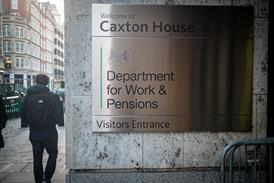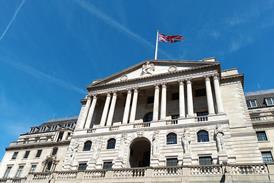Collective schemes – which pool members’ assets and risk – will have to comply with new valuation and reporting requirements, under initial proposals outlined yesterday in the Queen’s Speech.
The private pensions bill would aim to make provisions for a legislative framework for different categories of pension schemes. Three mutually exclusive definitions for schemes would be established – defined benefit, defined contribution and defined ambition – based on the degree of certainty of benefits offered to members.
We think it’s unlikely that employers would want to have a pension savings vehicle that is CDC only
Matthew Arends, Aon Hewitt
It would enable a new form of schemes “that pool risk between members and potentially allow for more stability around pension outcomes in retirement,” the briefing notes from the speech state.
The bill will also contain measures relating to the valuation and reporting requirements for these collective schemes.
The proposals follow a consultation from the Department for Work and Pensions in November last year that laid out plans for collective DC schemes, which would pay income to members from a pool of assets.
A method for valuing members’ benefits in the fund would be necessary to ensure that when members leave the scheme or draw their pension they receive the correct share of assets, said Stefan Lundbergh, head of innovation at Netherlands-based fiduciary manager Cardano.
“You need a sort of framework where you can put a price on claims on the fund in a way that’s fair to [members] and to members that are still in the fund,” said Lundbergh.
To do this an objective record-keeping system based on something like market rates will be needed, he added, to keep track of who owns what assets and money leaving and entering the fund.
Tim Cox, partner at law firm Linklaters, said: “I think what they are doing there is creating some transparency so that it’s always clear how much money is in the fund as a whole and how it’s been divided up.”
In a video explaining the impact of collective schemes on member outcomes, pensions minister Steve Webb said: “We also enable through the bill new forms of pension guarantee, where people build up a pension pot which is partly guaranteed and partly variable.”
Matthew Arends, partner at consultancy Aon Hewitt, said he has seen interest from large employers in collective schemes.
This follows claims from Webb last year that “big, big employers, household-name firms” were interested in the proposals.
However, employers would be unlikely to solely implement a collective scheme due to the additional flexibility afforded to defined contribution schemes in this year’s Budget, said Arends.
“We think it’s unlikely that employers would want to have a pension savings vehicle that is CDC only,” he said.
For example, employers could set up a DC scheme for employees to contribute to, which would allow them to take advantage of this flexibility, and a collective scheme that employer’s could pay into to provide a stable income for members, Arends added.
Collective reporting requirements
In the Netherlands, collective schemes are required to give an overview to members about the scheme’s performance, Lundbergh said.
Schemes are required to report to the regulator, the Dutch Central Bank, about its solvency levels, he said.
When schemes breach a solvency rate of 105 per cent it has to establish a recovery plan, which could mean increasing contributions.
“If you can’t recover you have to lower pensions in payment,” Lundbergh said.
It will not only be important for collective schemes to report to the regulator but also to members, to ensure transparency, said Cox.






















